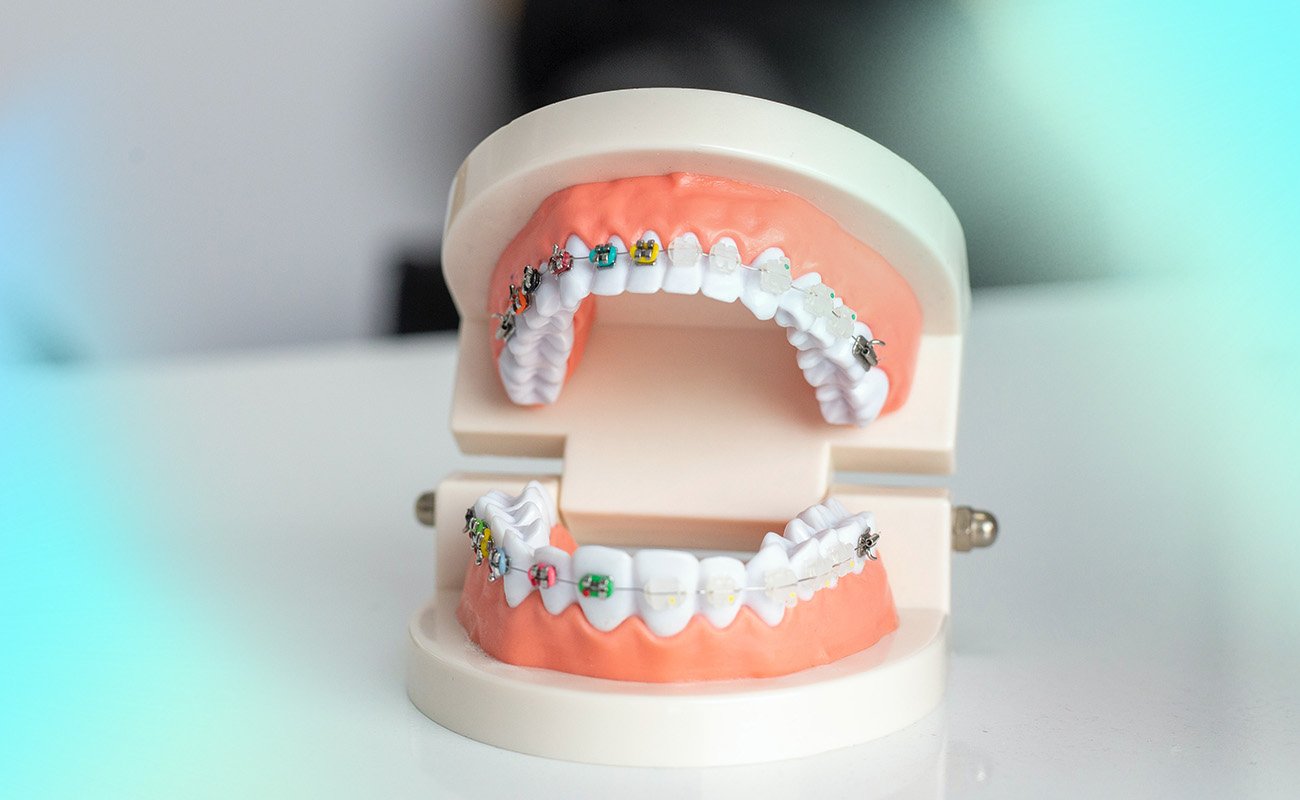For many kids, the thought of getting traditional metal braces is enough to make them cringe. The prospect of spending years with a mouth full of wires and brackets is understandably unappealing for children and teenagers who are already self-conscious about their appearance. Fortunately, modern dental technology has provided a fantastic alternative – invisible braces or clear aligners. These revolutionary orthodontic appliances are virtually undetectable, allowing kids to straighten their teeth discreetly and avoid the social stigma sometimes associated with conventional braces.
In this article we will focus on invisible braces for kids, shedding light on why they’re becoming the clear choice for those seeking not just corrective dental treatment, but also a boost in confidence and self-esteem. From their aesthetic appeal to their functional benefits, invisible braces are setting a new standard in pediatric orthodontics, promising confident smiles and a positive orthodontic experience for the younger generation.
Clear Aligners – Who Are They For?
Clear aligners are an alternative to traditional metal braces and offer increased convenience, flexibility, and discretion. Today, people of all ages have access to a variety of aligner types from several different providers that have products that suit all needs.
The ideal age to begin treatment with clear aligners can vary, but generally, it’s recommended for older children and teenagers whose adult teeth have fully erupted, usually around the age of 12 to 14. This ensures that the majority of their dental development is complete, making the treatment more effective.
However, not every young patient is a candidate for clear aligners. The suitability depends on several factors, including the complexity of the dental misalignment, the patient’s oral hygiene habits, and their commitment to wearing the aligners for the recommended 20-22 hours per day. Conditions like mild to moderate crowding, spacing issues, and certain bite irregularities can often be effectively treated with aligners. However, more severe cases or complex dental problems might require traditional braces or other orthodontic solutions.
Depending on the type of misalignment that needs correcting, age, maturity level, and temperament can be important factors in deciding if clear aligners are a good treatment option.
Pros and Cons of Invisible Braces for Kids
Clear aligners for children are a discreet alternative to traditional braces, combining the advantages of nearly invisible treatment with the obligation of regular wear and care. Let’s take a look at the pros and cons to see how this option works for young orthodontic patients.
Freedom with Food
With clear aligners, there is no restriction on what you can eat since you can remove the trays when eating and put them back in afterward. This offers kids peace of mind that they don’t have to worry about foods getting stuck in metal brackets or damaging their braces, as well as being able to enjoy all food types.
See our article: Can You Eat with Clear Aligners?
Simplified Oral Hygiene
A key benefit of aligners is that you can easily take them out when cleaning your teeth, ensuring that all areas of the mouth are brushed or flossed thoroughly. This allows for effortless access when brushing and flossing, ultimately enabling patients to keep their teeth clean during treatment.
Efficient Treatment for Kids
Clear aligners are often more effective for children than adults due to the dynamic nature of a child’s growing body. The malleable bone structure in kids allows teeth to be guided into their correct positions more readily, often resulting in a shorter treatment duration compared to adults.
Comfortable Wear
The comfort level offered by clear aligners is a significant upgrade from traditional metal braces. The smooth, plastic material of aligners is less likely to irritate the gums or the inside of the mouth. This reduction in discomfort is a huge plus for kids, who may be more sensitive to pain or irritation. Additionally, the need for fewer orthodontist visits for adjustments means less time spent in the dental chair and more time enjoying everyday activities.
See our article: Best Braces for Kids – What to Consider.
Worth Knowing
According to research published in Angle Orthodontist, conventional braces typically require more visits and longer treatment time, averaging 5.5 months longer than clear aligner therapy.
Discreet Appearance
The nearly invisible nature of clear aligners is perhaps one of their most attractive features, especially for self-conscious kids and teens. The ability to undergo orthodontic treatment without the noticeable appearance of metal brackets and wires is a considerable advantage. It allows kids to smile confidently and engage in social activities without the worry of how their braces look.
Ideal for Active Kids
Clear aligners are especially suitable for kids who are active in sports. The risk of injury from metal braces during physical activity is a concern for many parents and children alike. With clear aligners, this worry is mitigated as they can be easily removed during sports, eliminating the risk of cuts or damage from impact.
Consistency in Wearing Aligners
When kids forget to wear their aligners it can lead to negative consequences. Not wearing their aligners as directed can lead to teeth shifting back out of alignment, increased visits and treatments from the orthodontist, and a longer time to complete the corrective process.
Limited Effectiveness for Complex Cases
Clear aligners may not be suitable for all types of malocclusions. Severe cases, such as deep overbites or open bites, might require more intensive orthodontic treatments than aligners can offer, as aligners are typically most effective for mild to moderate corrections.
Worth Knowing
A study featured in the European Journal of Paediatric Dentistry finds that around the world, 56% of people experience malocclusion, with this condition affecting both genders equally.
Risk of Losing Aligners
The removable nature of clear aligners, while convenient for eating and cleaning, also poses a risk of loss, especially among active kids. Whether it’s leaving them in a school locker, on the kitchen table, or accidentally discarding them, the chances of misplacing aligners are higher, which can disrupt the treatment process and incur additional costs for replacements.
Rules for Wearing Aligners
To maximize the benefits of your aligners and ensure a smooth treatment process, it’s crucial to adhere to specific guidelines. One fundamental rule is to always remove your aligners before eating. This precaution prevents food particles from getting trapped between your teeth and the aligners, which could lead to potential damage or discomfort.
Maintaining excellent oral hygiene is another essential aspect of aligner care. It’s recommended to brush and floss your teeth twice daily to keep both your teeth and aligners clean. Additionally, it’s advisable to drink only water while wearing your aligners to prevent any staining or discoloration that other beverages might cause.
After meals, make sure to clean your mouth thoroughly before reinserting your aligners. This practice helps maintain oral health and ensures that your aligners fit well without trapping any food residues. For the treatment to be effective, it’s important to wear your aligners for the recommended 20-22 hours each day. Consistent wear is key to moving your teeth into the correct position and achieving the desired results.
Finally, always follow the specific instructions provided with your aligners. Keep an eye out for any signs of wear and tear to ensure you always get the best performance from them.
See our reviews of the best at-home aligners:
Byte Review – The top pick this aligner is the most affordable and comes with a lifetime guarantee. Included in each purchase is a free HyperBite and retainer.

Byte
An affordable option with refundable impression kits, free HyperByte, and a Byte for Life guarantee.
Check out Byte AlignersNewSmile Review – This low-cost option has premium aesthetics and comes with a free teeth whitening kit and retainer.

NewSmile
Affordable at-home treatment with positive reviews offering superior look and comfort.
Check out NewSmile AlignersCandid Review – Very similar to Invisalign aligners and offering a hybrid in-office care procedure this product has received a lot of positive reviews.

Candid
A hybrid of in-office and at-home treatment that provides 1-on-1 orthodontist support.
Check out Candid AlignersALIGNERCO – Lowest in price and a zero deposit monthly payment plan. A seasonal discount package is available for only $945.

AlignerCo
The cheapest at-home aligners, with monthly plans, no down payment, and considerable discounts.
Check out AlignerCo AlignersFrequently Asked Questions
Are Aligners Recommended for Children?
Aligners are recommended for children but generally work best when the patient has most or all of their permanent teeth, making them ideal for adolescents aged 11-18.
Can a 7-Year-Old Get Invisalign or Clear Aligners?
Invisalign has a product called Invisalign First which is an innovative clear aligner treatment that can help prevent more severe or complex orthodontic conditions from developing as permanent teeth emerge. This program is available for children aged 6-10 years of age.
Invisalign states that as a child grows and even still has baby teeth, it might be the perfect time for children to start orthodontic treatment.
Can Children Wear Clear Aligners?
Yes, children can wear clear aligners. This is an excellent option for children since it gives them the same great benefits as traditional braces but with a much more discreet look.
Clear aligners also provide an easier and more comfortable experience than traditional braces as they are made of a thin, flexible plastic that fits closely to teeth without irritating the gums or soft tissue in the mouth.
What is the Youngest Age for Invisalign?
Invisalign has a product called Invisalign First that can be used by children that are aged 6-10 years of age.
Sources
G Lombardo, F Vena, P Negri, S Pagano, C Barilotti, L Paglia, S Colombo, M Orso, S Cianetti, Worldwide prevalence of malocclusion in the different stages of dentition: A systematic review and meta-analysis; Eur J Paediatr Dent. 2020 Jun;21(2):115-122. doi: 10.23804/ejpd.2020.21.02.05. Available online at: https://pubmed.ncbi.nlm.nih.gov/32567942/
Saliba Moimaz, S. A., Ísper Garbin, A. J., Chaves Lima, A. M., Lolli, L. F., Saliba, O., Adas, C., A longitudinal study of habits leading to malocclusion development in childhood, BMC Oral Health 2014. Available online at: https://bmcoralhealth.biomedcentral.com/articles/10.1186/1472-6831-14-96
Buschang, P.H., Shaw S.G., Ross M., Crosby D., Campbell P.M., Comparative time efficiency of aligner therapy and conventional edgewise braces. Angle Orthod (2014). DOI: 10.2319/062113-466. Available online at: https://meridian.allenpress.com/angle-orthodontist/article/84/3/391/58505/

